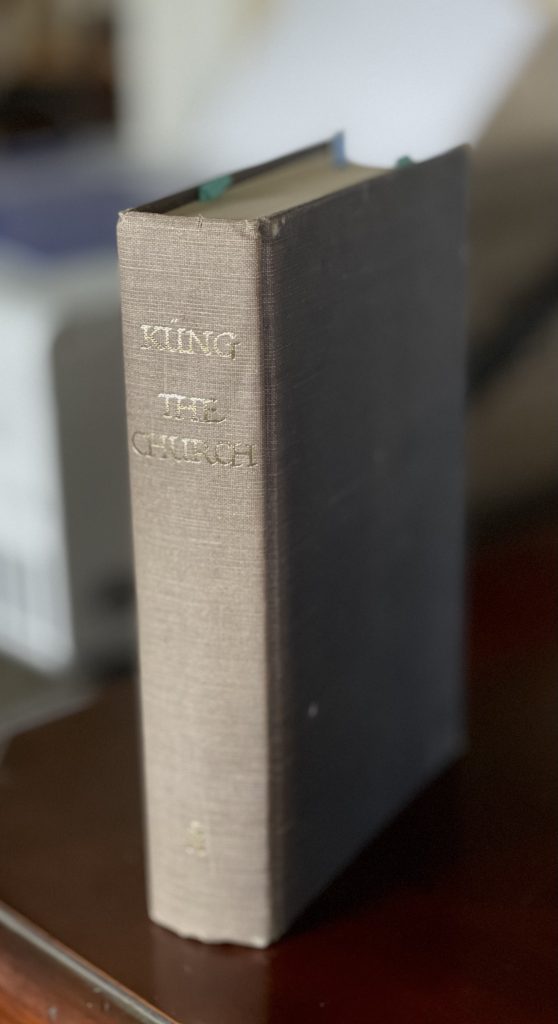What looks like a serious crisis may mark the moment of new life; what looks a sinister threat may in reality be a great opportunity.
Han Kung —THE CHURCH
The restoration plea is an earnest entreaty to bring back the church of our Lord into its original state. A plea to restore assumes that an original existed and was lost. The restoration plea assumes a pattern existed and could and should be restored.
G K Wallace (church of Christ evangelist)
My church history came in a Restoration Movement context. A movement that sought to restore the whole Christian church based on visible patterns set forth in the New Testament; its momentum came from a conviction that the Church of that day, divided and contentious, was no longer the New Testament church. Unity and peace could only achieved by restoring the the one true Church.
Aspirations of the Restoration Movement, though commendable, were misguided and ultimately failed to build unity or restore an idealized New Testament Church in Acts.
Today’s angst about church is similar, in many ways, to Alexander Campbell’s 18th/19th century days. The opening words of his Declaration and Address are eerily familiar:
FROM the series of events which have taken place in the churches for many years past, especially in this Western country, as well as from what we know in general of the present state of things in the Christian world, we are persuaded that it is high time for us not only to think, but also to act…
Alexander Campbell — Declaration and Address 1809
As I wrote earlier, I share an opinion that the church is headed in the wrong direction. Hopefully, that conclusion has been reached by thoughtful examination of proper criterion as suggested by Kung.
If leadership becomes convinced the church is headed in the wrong direction, what should they do? Any answer will be formulated around perceptions of “wrong direction”.
If the measure of church health is attendance and growth, Gallup’s report on church membership decline, most likely,will be met with “turn around” strategies — doubling down on what has worked in the past, blaming culture influence and expounding on the need to get back to “the basics”.
In my past, the meeting would have concluded with either, plans for an extended Gospel Meeting, or in later years, a new class or conference on church growth. In the most desperate circumstances there would be a change in Preacher / Pastor. Of course, no elders would resign or be fired.
Little or no consideration is given to the possibility that the existing church had become misdirected. As Kung points out: “All too easily the Church can become the prisoner of the image it has made for itself at one particular period in history.” The restoration movement became a prisoner of the image of the church in the book of Acts, most specifically, Acts 2:38 -47
Peter replied, “Repent and be baptized, every one of you, in the name of Jesus Christ for the forgiveness of your sins. And you will receive the gift of the Holy Spirit. The promise is for you and your children and for all who are far off—for all whom the Lord our God will call.” With many other words he warned them; and he pleaded with them, “Save yourselves from this corrupt generation.” Those who accepted his message were baptized, and about three thousand were added to their number that day. They devoted themselves to the apostles’ teaching and to fellowship, to the breaking of bread and to prayer. Everyone was filled with awe at the many wonders and signs performed by the apostles. All the believers were together and had everything in common. They sold property and possessions to give to anyone who had need. Every day they continued to meet together in the temple courts. They broke bread in their homes and ate together with glad and sincere hearts, praising God and enjoying the favor of all the people. And the Lord added to their number daily those who were being saved.
From that, an abstract and idealistic ecclesiology developed which described an ideal rather than the real church. As Kung observed, such an ecclesiology might attract unthinking admirers, but it would fail to move, even repulse, a thoughtful critic.
Kung continued: “Only a realistic and concrete view of the church, as opposed to an idealistic and abstract one, will enable us to point out to the critic who only sees the negative side of the Church that the faults, whether real or imagined, do not touch the most profound and essential in the Church.”
In my limited view and experience, contemporary efforts to restore, renew, renovate, et al, are centered in idealistic and abstract, rather than realistic and concrete views of the church. Like the Restoration Movement and similar movements in church history, relying on idealistic and abstract ecclesiology they are destined to fail.
A troubling questions to be addressed: “What make me think I can grasp the vital fundamental dimensions of the Church?”
Kung’s declaration is even more troubling. “Only the believing Christian can do that.”
More to come.
Still on the journey.



